Lanford Wilson was an American playwright. His work, as described by The New York Times, was "earthy, realist, greatly admired [and] widely performed." Wilson helped to advance the Off-Off-Broadway theater movement with his earliest plays, which were first produced at the Caffe Cino beginning in 1964. He was one of the first playwrights to move from Off-Off-Broadway to Off-Broadway, then Broadway and beyond.
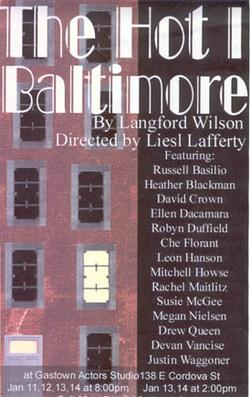
The Hot L Baltimore is a 1973 American play by Lanford Wilson set in the lobby of the Hotel Baltimore. The plot focuses on the residents of the decaying property, who are faced with eviction when the structure is condemned. The play draws its title from the hotel's neon marquee with a burned-out "e" that was never replaced.
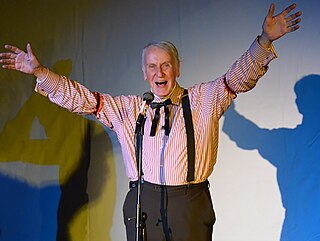
Robert Patrick was an American playwright, poet, lyricist, short story writer, and novelist.
Balm in Gilead is a 1965 American play written by American playwright Lanford Wilson.
The Circle Repertory Company, originally named the Circle Theater Company, was a theatre company in New York City that ran from 1969 to 1996. It was founded on July 14, 1969, in Manhattan, in a second floor loft at Broadway and 83rd Street by director Marshall W. Mason, playwright Lanford Wilson, director Rob Thirkield, and actress Tanya Berezin, all of whom were veterans of the Caffe Cino. The plan was to establish a pool of artists — actors, directors, playwrights and designers — who would work together in the creation of plays. In 1974, The New York Times critic Mel Gussow acclaimed Circle Rep as the "chief provider of new American plays."
Home Free! is a one-act play by American playwright Lanford Wilson. The play is among Wilson's earlier works, and was first produced off-off-Broadway at the Caffe Cino in 1964.
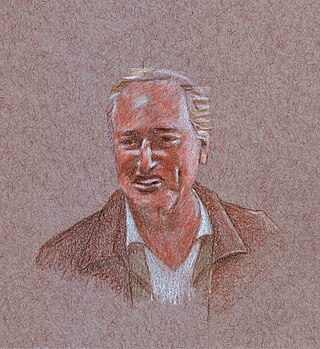
Marshall W. Mason is an American theater director, educator, and writer. Mason founded the Circle Repertory Company in New York City and was artistic director of the company for 18 years (1969–1987). He received an Obie Award for Sustained Achievement in 1983. In 2016, he received the Tony Award for Lifetime Achievement in the Theater.
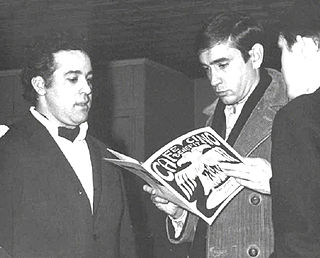
Joseph Cino, was an Italian-American theatre producer. The Off-Off-Broadway theatre movement is generally credited to have begun at Cino's Caffe Cino in the West Village of Manhattan.
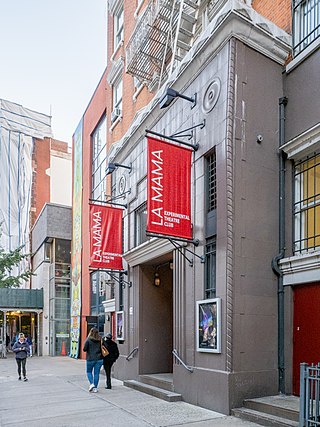
La MaMa Experimental Theatre Club is an Off-Off-Broadway theater founded in 1961 by African-American theatre director, producer, and fashion designer Ellen Stewart. Located in the East Village neighborhood of Manhattan in New York City, the theater began in the basement boutique where Stewart sold her fashion designs. Stewart turned the space into a theater at night, focusing on the work of young playwrights.
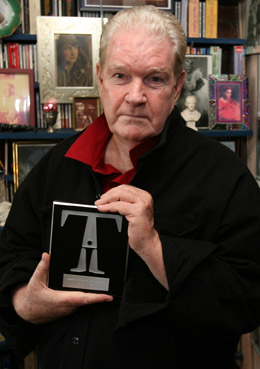
Doric Wilson was an American playwright, director, producer, critic and gay rights activist.
Dennis Parichy is an American lighting designer. He won the 1980 Drama Desk Award for Talley's Folly and the Obie Award in 1981.
John P. "Johnny" Dodd was a lighting designer for theater, dance and music active in the downtown art scene in Manhattan during the latter half of the 20th century.
Jeffrey Weiss was an American playwright, impresario, and actor, both on Broadway and a theater he ran with partner Ricardo Martinez in the East Village, Manhattan.

Haralambos Monroe "Harry" Koutoukas was a surrealist playwright, actor and teacher. Along with Sam Shepard, Lanford Wilson, Doric Wilson, Tom Eyen and Robert Patrick, Koutoukas was among the artists who gave birth to the Off-Off Broadway theatre movement of the 1960s and 1970s.

George Birimisa was an American playwright, actor, and theater director who contributed to gay theater during the 1960s, the early years of the Off-Off-Broadway movement.
Theatre Genesis was an off-off-Broadway theater founded in 1964 by Ralph Cook. Located in the historic St. Mark's Church in-the-Bowery in the East Village of Manhattan, it produced the work of new American playwrights, including Lanford Wilson, Tony Barsha, Murray Mednick, Leonard Melfi, Walter Hadler, and Sam Shepard. Theatre Genesis is often credited as one of the original off-off-Broadway theaters, along with Joe Cino's Caffe Cino, Ellen Stewart's La MaMa Experimental Theatre Club, and Judson Poets Theatre.
Ludlow Fair is a one-act play by American playwright Lanford Wilson. It was first produced at Caffe Cino in 1965, a coffeehouse and theatre founded by Joe Cino, a pioneer of the Off-Off-Broadway theatre movement.

Tanya Berezin was an American actress, co-founder and an artistic director of Circle Repertory Company in New York City, and educator. She performed on Broadway and Off-Broadway, and also appeared in a number of films and television series.
The Harris Family is an American family of entertainers. Their careers, collectively and individually, encompass theater, music, film, broadcast media and performance art. They are best known as pioneers of experimental Off-Off-Broadway theater in New York City, San Francisco and Europe from the mid-1960s through the early 1980s.
Michael Warren Powell was an American artistic director, director, actor and designer involved in the Off-Off-Broadway movement, Off-Broadway and in the development of new American plays.









